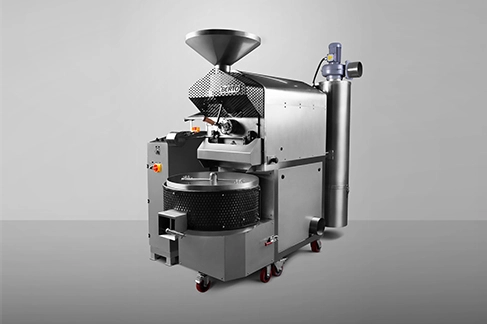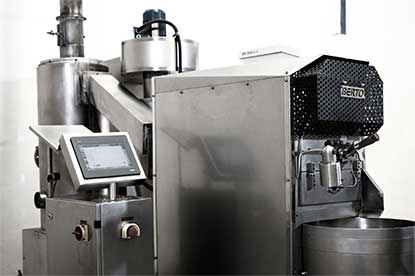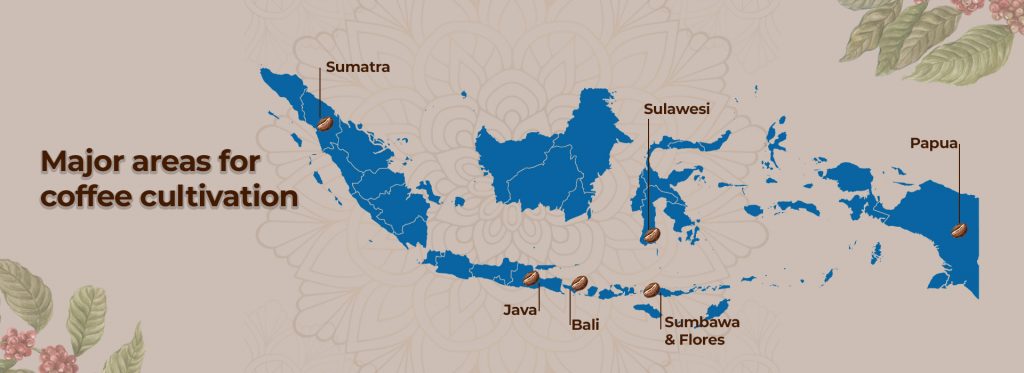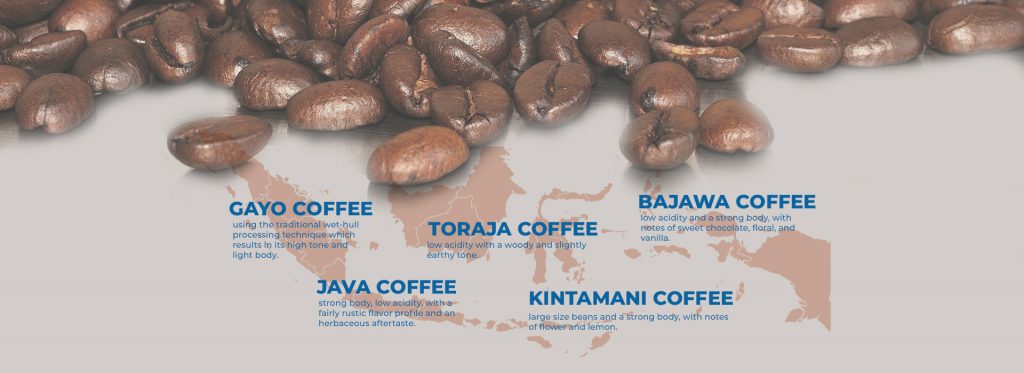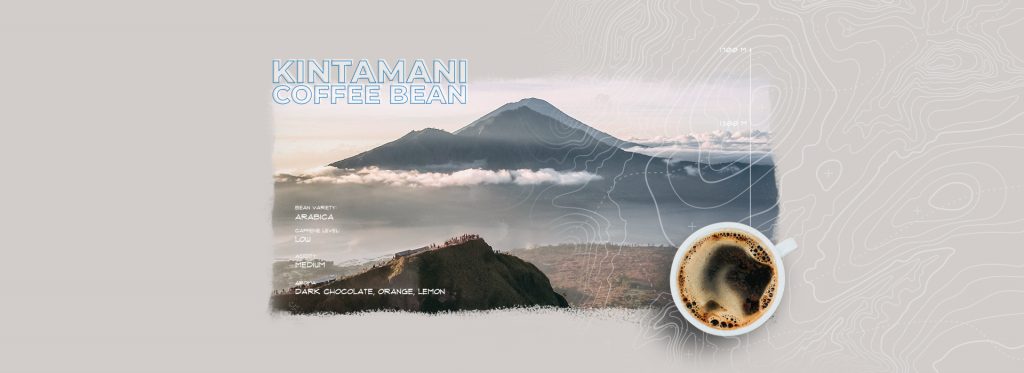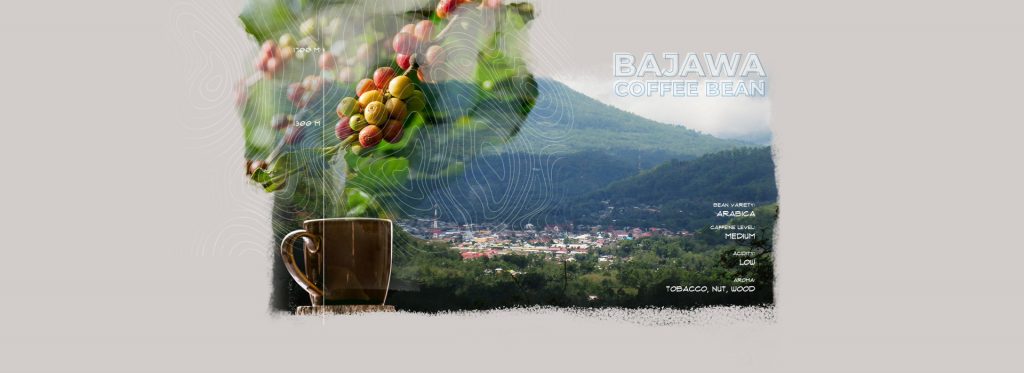Roasting Indonesian Coffee Beans
Indonesia is one of the world’s leading coffee producers. The archipelago is geographically and climatologically well-suited for coffee plantations, as it is located near the equator with numerous interior mountainous regions containing rich volcanic soil that created well-suited microclimates for the growth and production of coffee. Coffee beans in Indonesia consist of arabica, robusta, and liberica, with robusta making up about 80% of the country’s coffee production. We will discuss the origins, characteristics, and guidelines for roasting Indonesian coffee beans.
Understanding Indonesian Coffee Beans
During the Dutch occupation, the first coffee seedlings arrived in Batavia (now Jakarta) from Malabar, India in 1696. In 1711, the first coffee export was sent from Java to Europe by the Dutch East India Company. By the 1870s, the Dutch East Indies had expanded arabica coffee-growing areas in Sumatra, Bali, Sulawesi, and Timor, however, a disaster struck in 1876, when the coffee rust disease swept through Indonesia, wiping out most of the Arabica type. Robusta coffee was introduced to East Java in 1900 as a substitute. Today, around 80% of the coffee beans grown in Indonesia are the Robusta type, although Arabica is steadily making its comeback.
Different Coffee Regions in Indonesia
The main areas for growing coffee beans in Indonesia are Sumatra, Sulawesi, Java, Bali, Sumbawa, Flores, and Papua. Each island yields coffee with a specific characteristic and flavor, due to different proximities from the equator.
After harvesting, the coffee cherries are processed in various ways, each relaying its own flavor and aroma into the final product. A small number of Arabica farmers in Sulawesi, Flores, and Bali, and almost all Robusta farmers across Indonesia, use the traditional dry processing method, where the cherries are dried in the sun and then de-hulled in a dry state. Most farmers in Sulawesi, Sumatra, Flores, and Papua use the wet hulling process where the outer skin is removed from the cherries using rustic pulping machines then stored for up to a day before they are washed off and partially dried for sale.
Besides the different processing methods, the various terrains, climate, and growing methods also contributed to the wide range of coffee flavor profiles across various Indonesian coffee beans. For example, coffee from Sulawesi generally displays warm or nutty spice notes like cinnamon or cardamom, while coffee from Flores is known for sweet chocolate, floral and woody notes. But generally, Indonesian coffee tends to be full-bodied, dense, with low acidity and a syrupy mouthfeel.
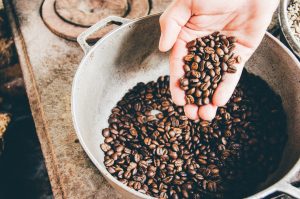
Guide to Roasting Indonesian Coffee Beans
As the Indonesian coffee beans are rather dense, they are suitable for dark roasts. The high density means a longer roast, which yields dark roasted beans. Roasting Indonesian coffee beans into a dark roast brings out the bold characteristics, focusing on warm flavors, dark chocolate, earthiness, and spices.
One of the important factors to consider when roasting Indonesian coffee beans is the moisture content. Wet-hulled coffee has a slightly higher moisture content compared to the other processes, making it require more heat to penetrate the beans. Hence it is recommended to check the moisture content before the beans start their journey in the roaster machine. For coffee beans with higher moisture content, a longer drying phase is also recommended to avoid roasting the beans too quickly. Experimenting with various settings of the roasting machine and making adjustments whenever necessary can help in achieving the roast profile that elevates the coffee bean’s best characteristics. Keep an open mind and discard any perceived notions while exploring coffee beans from various parts of Indonesia.
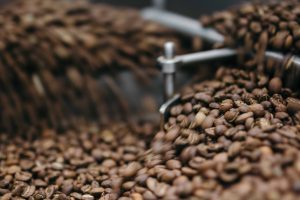
Berto Roaster Machines build coffee roasting machines with powerful features to achieve the desired roast profile with Indonesian coffee beans. From Berto One, Berto D-Roasters to Berto R-Roasters, our machines will help bring your business to the next level.
Cupping also plays an important part in roasting Indonesian coffee beans. Coffee cupping can help coffee roasters achieve their desired results, and ensure the roasted coffee beans have consistent quality at every batch.
In conclusion, the long-standing history, the climate, and the processing methods give Indonesian coffee beans their distinctive characters and flavors. Coffee roasters should have an open mindset, experiment and evaluate the results to achieve their desired roast profile.
Understanding Heat Transfer Inside The Coffee Roaster Machine


